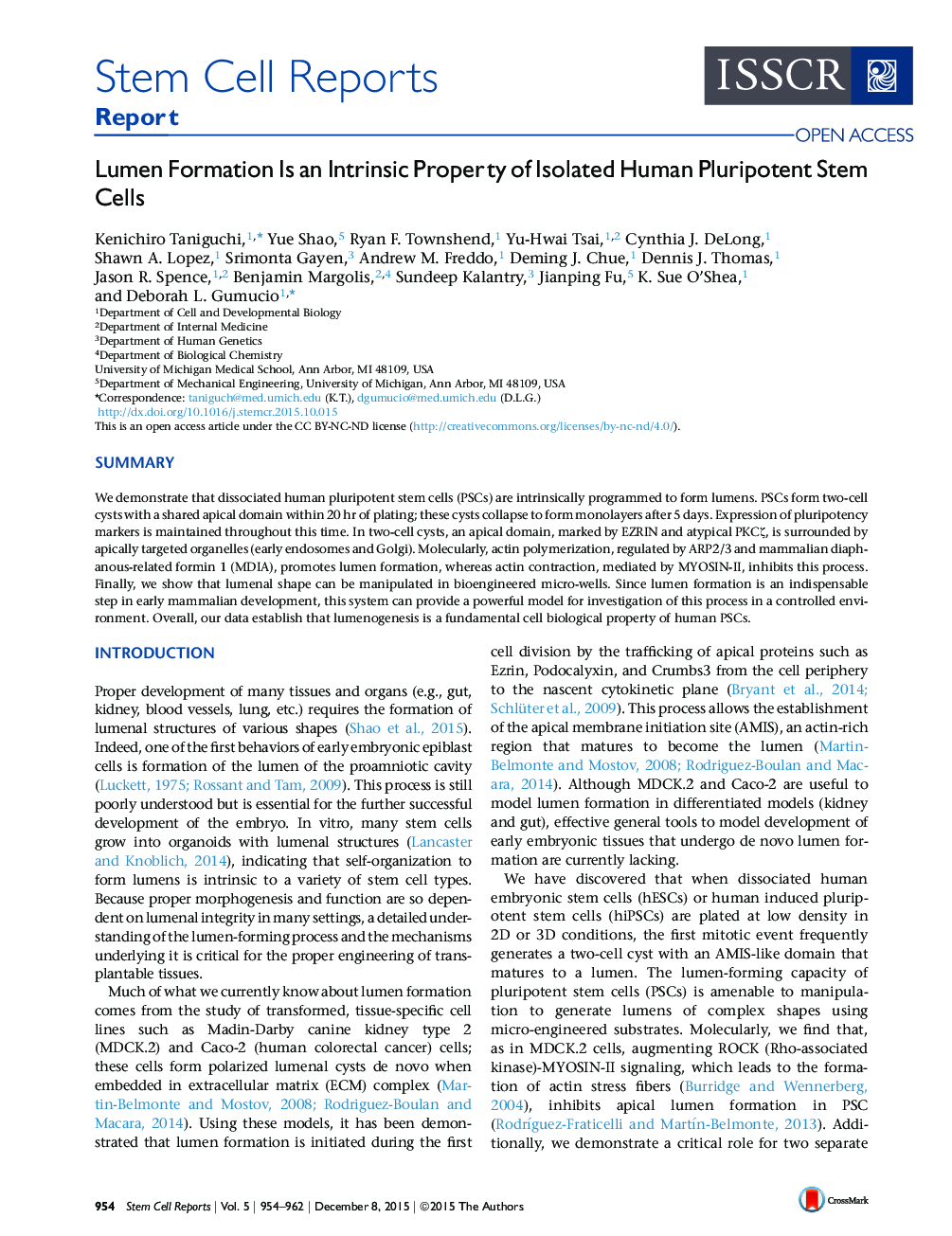| Article ID | Journal | Published Year | Pages | File Type |
|---|---|---|---|---|
| 2093698 | Stem Cell Reports | 2015 | 9 Pages |
•Lumen formation is an intrinsic and fundamental property of hESCs•Two cell clones exhibit highly organized and well-polarized AMIS structures•Shapes of hESC lumen are malleable when grown in an engineered micro-well system•Formin- and ARP2/3-dependent actin polymerization promotes lumenogenesis
SummaryWe demonstrate that dissociated human pluripotent stem cells (PSCs) are intrinsically programmed to form lumens. PSCs form two-cell cysts with a shared apical domain within 20 hr of plating; these cysts collapse to form monolayers after 5 days. Expression of pluripotency markers is maintained throughout this time. In two-cell cysts, an apical domain, marked by EZRIN and atypical PKCζ, is surrounded by apically targeted organelles (early endosomes and Golgi). Molecularly, actin polymerization, regulated by ARP2/3 and mammalian diaphanous-related formin 1 (MDIA), promotes lumen formation, whereas actin contraction, mediated by MYOSIN-II, inhibits this process. Finally, we show that lumenal shape can be manipulated in bioengineered micro-wells. Since lumen formation is an indispensable step in early mammalian development, this system can provide a powerful model for investigation of this process in a controlled environment. Overall, our data establish that lumenogenesis is a fundamental cell biological property of human PSCs.
Graphical AbstractFigure optionsDownload full-size imageDownload as PowerPoint slide
